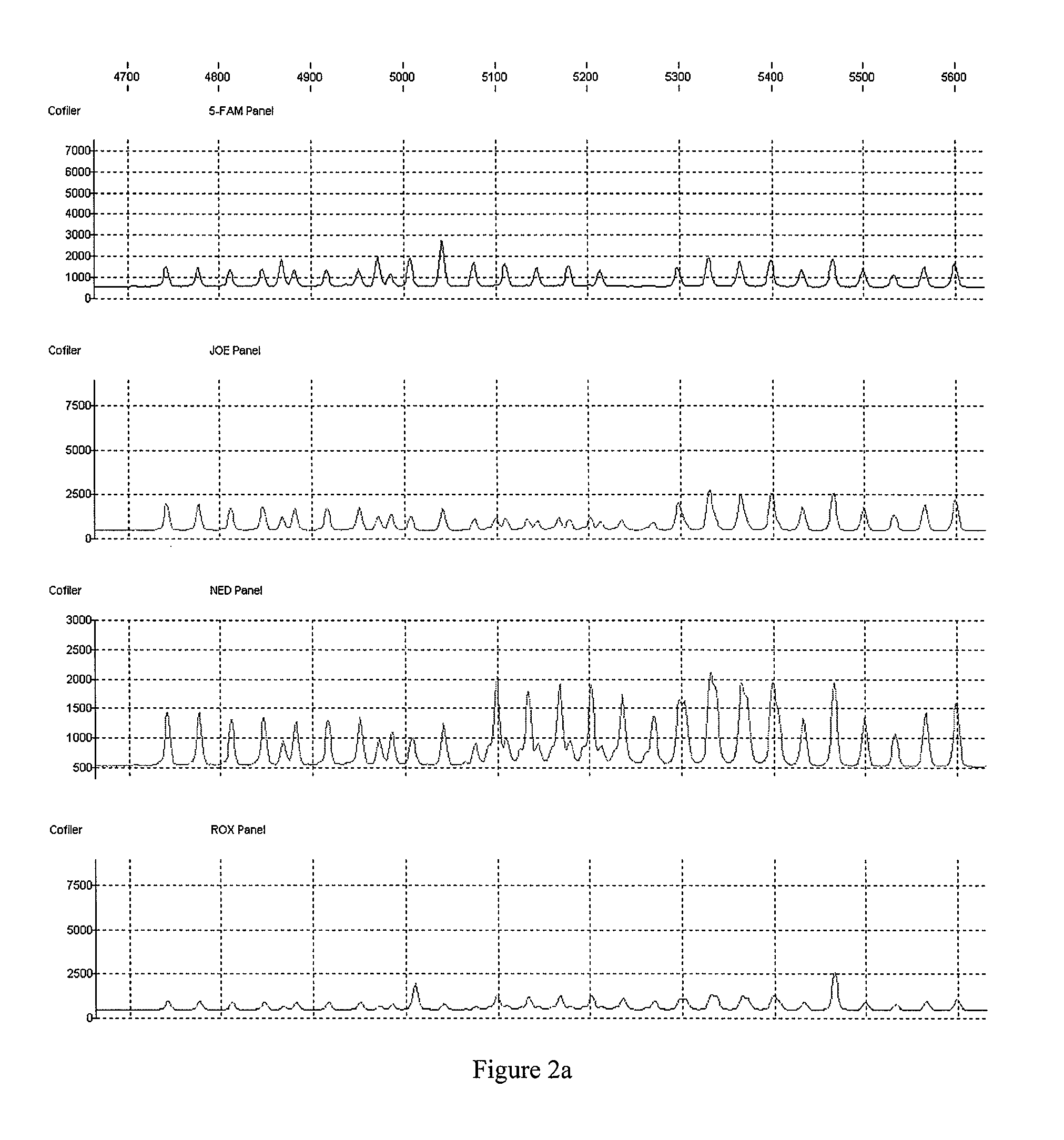Method and apparatus for allele peak fitting and attribute extraction from DNA sample data
a technology of allele peak fitting and attribute extraction, applied in the field of interpreting allele peak data obtained from dna analysis, can solve the problems of inability to control the fitting protocol or parameters, models that are not necessarily physically correct, and the complexity of four models used, so as to improve the accuracy of fitting skewed peaks, reduce the effect of fitting error and greatly reduce the fitting error
- Summary
- Abstract
- Description
- Claims
- Application Information
AI Technical Summary
Benefits of technology
Problems solved by technology
Method used
Image
Examples
example 1
Formulation of the Peak Fitting Problem
[0098]This example describes a formulation of the allele peak fitting problem. It provides a discussion on the measurement data that the peak fitter uses, presenting the ideal and non-ideal types of peaks that are to be encountered. The solution starts with a default fit by a Gaussian equation model whose parameters are arrived at by optimization. The optimization method and equation models that will be used are presented and limitations of the Gaussian model are described. If the default fit is deemed unacceptable, advanced models are sequentially evoked to provide a better fit. The development of criteria for triggering advanced fits and accepting results will be discussed.
example 1a
Allele Peak Detection and Fitting
[0099]The goal of peak detection is to identify a potential peak and return a window of sufficient width in scan units to contain the entire peak. This window can then be used by the peak fitter to fit the peak data by a selected model equation and return the peak attributes. A simple description of how the peak detector works is first described.
[0100]The peak detector is a complex state machine that iterates through raw DNA data, e.g., electropherogram data, looking for peaks. It utilizes a small window to track increases and decreases in area and height of data points and detect where potential peaks are present. The window uses thresholds to determine sufficient height and area measurements to trigger a peak detection event. When the area and height thresholds are exceeded, the peak detector records the current scan unit value as the start of a new peak window. It then iterates across the data until the area and height values corresponding to a su...
example 1b
Solution Approach
[0104]The peak fitting problem may be formulated as a least squares error optimization problem. A peak model, which is a parameterized mathematical equation that predicts the measured signal intensity (RFU) as a function of the scan unit position, is postulated and tried. For any combination of specific values of the model's parameters, an error function can be defined as one-half of the sum of the squared differences (error) between the given measurement data and the predicted measurements calculated from the model at the array of scan unit values within the peak window. An optimization method is used to arrive at the optimal parameter values that minimize the error function. Many peak model families can be considered. The final choice of the model depends upon the required accuracy and computational efficiency. Once finalized and implemented, the optimization method becomes the main workhorse (the most important and computationally intensive element) of the fitter...
PUM
 Login to View More
Login to View More Abstract
Description
Claims
Application Information
 Login to View More
Login to View More - R&D
- Intellectual Property
- Life Sciences
- Materials
- Tech Scout
- Unparalleled Data Quality
- Higher Quality Content
- 60% Fewer Hallucinations
Browse by: Latest US Patents, China's latest patents, Technical Efficacy Thesaurus, Application Domain, Technology Topic, Popular Technical Reports.
© 2025 PatSnap. All rights reserved.Legal|Privacy policy|Modern Slavery Act Transparency Statement|Sitemap|About US| Contact US: help@patsnap.com



